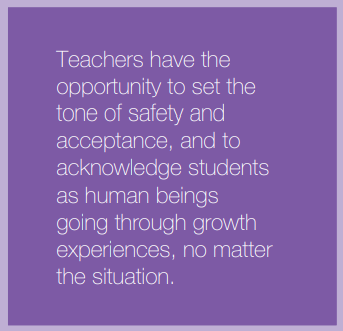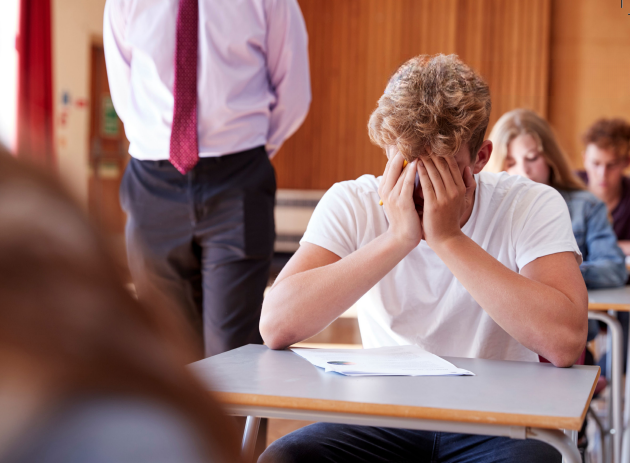Choosing a More Powerful Approach to Conflict
When there’s conflict in the classroom, the typical need is to shut it down – to expect apologies and lay down consequences. However, there are other (perhaps less conventional) more heart-centred methods of dealing with it, that will, over time, transform the way your students feel and act in the classroom.
How do we go about bringing those methods into an environment that generally promotes keeping a lid on disruptive behaviour through a more authority-focused approach? How do we divert from simply labelling students as problematic rather than adjusting the way of connecting to the heart of who their students are and what they truly need?
Every action stems from something that’s happening inside us that we may not always have the knowledge of or words for. For emotional teenagers, lack of safe space to engage with what’s going on for them will only ever lead to disruption.
This article will present a way of initiating a calmer, more grounded approach to handling conflict that will ultimately leave you feeling less irate, and your students feeling truly witnessed in whatever inner turmoil they may be unconsciously experiencing. They can become more self aware and more conscious in how they choose to be in each moment.
 To demonstrate the concept, here’s an example story. Johnny is 14 years old. His parents yell at him often, and he has younger siblings who disrupt him all the time. He doesn’t have many friends in real life. Dad has high expectations.
To demonstrate the concept, here’s an example story. Johnny is 14 years old. His parents yell at him often, and he has younger siblings who disrupt him all the time. He doesn’t have many friends in real life. Dad has high expectations.
Johnny really doesn’t enjoy maths, isn’t that great at it, and often disrupts other students because he either gets bored or overwhelmed. Stories play repeatedly in his mind of how useless he is and how his parents aren’t going to be happy with him anyway. He doesn’t resonate with the teacher’s teaching style, and his way of learning (kinesthetic) isn’t an option.
With no one to turn to, he has picked up the belief that he is not worth others’ time, he isn’t very clever and that school is a place where if you don’t fit into a specific box, then maybe it’s not worth being there in the first place – but, being only 14, he doesn’t have many options. To add to the matter, his teachers don’t know or understand these factors.
The thing is, when he acts up, he is treated as a problem straight away, because he’s been ‘a problem’ since he started college. The narrative of ‘disruptive Johnny’ gets amplified in his mind, and his maths teacher in particular, has lost her patience.
The usual lines are: “Johnny, if you continue to act up, you’ll be back in the common room for the rest of class,” or, “Do you want to end up in detention after school?”
Now, I understand there are rules and systems that have been in place since forever that won’t change overnight. I get that students are there to learn and it’s not good if one person stops everyone else from doing so.
However, there is also an all-time high for students seeking help for mental health-related issues, teenage suicide, young people favouring home learning, or simply just not going to school. There are many complex layers to this that aren’t just about education. Teachers are not supposed to be substitute counsellors, nor do they have the time to tend to every student’s emotional baggage.
But teachers do have the opportunity to set the tone of safety and acceptance, and to acknowledge students as human beings going through growth experiences, no matter the situation. This can bring down so many walls and open up the space for learning in a whole new, deeply connecting way.
How can you implement these things?
If needed, take a deep breath before responding to conflict. Soften your eye contact. Address your tone of voice and speak from a place of compassion and non-judgment, regardless of what’s going on. Yes, you may face resistance, but the more a person resists a warm approach, the more they need it. Putting words around fears and feelings is a hugely positive step in the right direction when it comes to changing behaviours.

Here’s an example: “I see you, Johnny. I understand that maths is hard for you and it might make you feel quite anxious. I know that your actions are helping you cope with how you feel at this moment, and it’s okay. Please let me know if there is a way I can support you. Otherwise, know that you’re safe to feel.” Then, leave the choice of how he responds up to him. If he chooses to disengage, trust that he is finding himself in your new way of being around him and that he will find the next steps himself.
The goal is to encourage students to truly see and transform themselves. I encourage you to ask yourself: How many students have you taught or come across who have lost their way in school or a particular subject, because their behaviour affects their learning and the means of dealing with them actually just takes everyone in circles?
Your energy shifts will have more power than any consequences.
